-
 bitcoin
bitcoin $105968.894684 USD
4.17% -
 ethereum
ethereum $3639.320047 USD
7.62% -
 tether
tether $1.000339 USD
0.06% -
 xrp
xrp $2.407774 USD
5.96% -
 bnb
bnb $1011.704193 USD
2.28% -
 solana
solana $166.942754 USD
6.37% -
 usd-coin
usd-coin $1.000143 USD
0.03% -
 tron
tron $0.291515 USD
0.25% -
 dogecoin
dogecoin $0.181682 USD
4.06% -
 cardano
cardano $0.585450 USD
4.54% -
 hyperliquid
hyperliquid $42.099968 USD
5.20% -
 chainlink
chainlink $16.160745 USD
5.45% -
 zcash
zcash $645.269648 USD
12.96% -
 bitcoin-cash
bitcoin-cash $507.430338 USD
2.80% -
 stellar
stellar $0.290357 USD
3.69%
How to use DMI in combination with trading volume? Is the DMI signal more reliable when the volume is large?
DMI, with its +DI, -DI, and ADX components, helps traders gauge trend strength; high volume can confirm DMI signals, enhancing their reliability.
May 23, 2025 at 02:14 pm
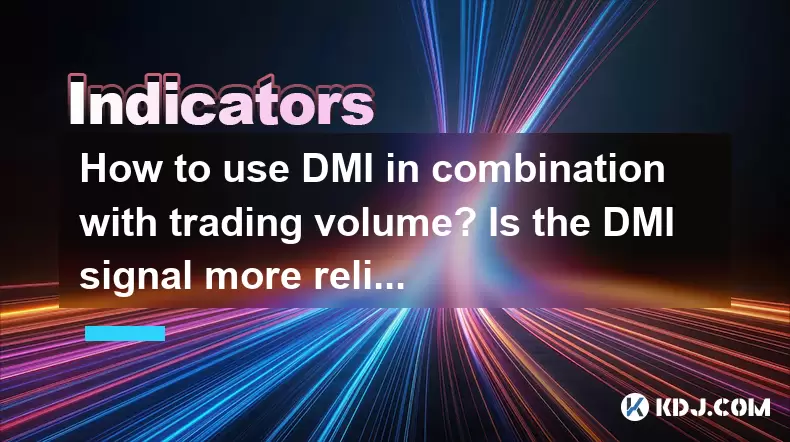
The Directional Movement Index (DMI) is a technical indicator used by traders to determine the strength of a trend and its potential direction. When combined with trading volume, it can offer a more comprehensive view of market dynamics. This article will explore how to effectively use DMI in combination with trading volume and discuss whether DMI signals are more reliable when the volume is large.
Understanding DMI and Its Components
DMI consists of three main components: the Positive Directional Indicator (+DI), the Negative Directional Indicator (-DI), and the Average Directional Index (ADX). The +DI measures the upward movement in price, while the -DI measures the downward movement. The ADX, on the other hand, quantifies the strength of the trend, regardless of its direction. When the ADX is above 25, it typically indicates a strong trend, whereas a value below 20 suggests a weak trend.
To use DMI effectively, traders look for crossovers between the +DI and -DI lines. A bullish signal is generated when the +DI crosses above the -DI, suggesting that the upward momentum is stronger than the downward momentum. Conversely, a bearish signal occurs when the -DI crosses above the +DI, indicating stronger downward momentum.
The Role of Trading Volume in DMI Analysis
Trading volume is a critical factor in confirming the strength of a trend. High volume often accompanies significant price movements, providing validation for the trend indicated by the DMI. When a bullish or bearish signal is generated by the DMI, traders should check the corresponding volume to ensure the signal's reliability.
For instance, if the +DI crosses above the -DI and the volume is significantly higher than average, it suggests strong buying interest and reinforces the bullish signal. Similarly, if the -DI crosses above the +DI with high volume, it confirms the bearish signal as it indicates strong selling pressure.
Combining DMI and Volume in Trading Strategies
To integrate DMI and volume in a trading strategy, follow these steps:
- Monitor DMI Signals: Keep an eye on the +DI and -DI crossovers to identify potential entry and exit points. A bullish signal occurs when the +DI crosses above the -DI, while a bearish signal is generated when the -DI crosses above the +DI.
- Check Volume Levels: After identifying a DMI signal, check the trading volume. Look for volume levels that are significantly higher than the average. This can be done by comparing the current volume to a moving average of volume or by using volume indicators such as the Volume Oscillator.
- Confirm the Signal: If the volume is high during a DMI signal, it confirms the strength of the trend. For example, a bullish DMI signal with high volume suggests a strong upward trend, making it a good opportunity to enter a long position.
- Set Stop-Loss and Take-Profit Levels: Once you have confirmed the signal with volume, set appropriate stop-loss and take-profit levels to manage risk. For a bullish signal, place the stop-loss below the recent swing low, and for a bearish signal, place it above the recent swing high.
Is the DMI Signal More Reliable When the Volume is Large?
The reliability of DMI signals can indeed be enhanced when accompanied by large trading volumes. High volume acts as a confirmation tool, indicating that the trend identified by the DMI is backed by substantial market participation. This increases the confidence in the signal and reduces the likelihood of false breakouts or reversals.
However, it is important to note that high volume alone does not guarantee the success of a trade. Other factors such as market conditions, overall trend, and the presence of other technical indicators should also be considered. For instance, during periods of high volatility or market news events, volume spikes can occur without necessarily indicating a sustainable trend.
Practical Example of Using DMI with Volume
Consider a scenario where you are analyzing a cryptocurrency chart using the DMI and volume. You notice that the +DI line has crossed above the -DI line, indicating a potential bullish trend. To confirm this signal, you check the volume and find that it is significantly higher than the average volume over the past few days.
- DMI Signal: The +DI crosses above the -DI, suggesting a bullish trend.
- Volume Confirmation: The volume during this crossover is 30% higher than the 20-day average volume.
- Action: Given the high volume, you decide to enter a long position. You place a stop-loss order just below the recent swing low to manage risk and set a take-profit level at a resistance level identified on the chart.
Adjusting DMI Settings for Different Market Conditions
The default settings for DMI are typically 14 periods for the +DI, -DI, and ADX. However, traders may need to adjust these settings based on the specific cryptocurrency and market conditions they are trading in. For highly volatile cryptocurrencies, using a shorter period (e.g., 7 periods) might provide more responsive signals. Conversely, for less volatile assets, a longer period (e.g., 20 periods) might be more appropriate.
When adjusting the DMI settings, it is crucial to backtest the new settings to ensure they provide reliable signals. Additionally, consider the volume data in conjunction with the adjusted DMI settings to maintain the reliability of the signals.
Integrating DMI and Volume with Other Indicators
While DMI and volume can be powerful tools on their own, integrating them with other technical indicators can provide a more robust trading strategy. For example, combining DMI with the Relative Strength Index (RSI) can help identify overbought or oversold conditions, which can be particularly useful in confirming DMI signals.
- DMI and RSI: If the DMI generates a bullish signal and the RSI is below 70, it suggests that the asset is not yet overbought, increasing the likelihood of a successful long position. Conversely, if the DMI generates a bearish signal and the RSI is above 30, it indicates that the asset is not yet oversold, supporting the bearish signal.
- DMI and Moving Averages: Using moving averages can help filter out false signals. For instance, if the DMI generates a bullish signal and the price is above a key moving average (e.g., the 50-day moving average), it adds further confirmation to the bullish trend.
Frequently Asked Questions
Q1: Can DMI be used effectively in all market conditions?A1: DMI can be used in various market conditions, but its effectiveness may vary. In trending markets, DMI is particularly useful as it helps identify the direction and strength of the trend. In range-bound markets, DMI signals may be less reliable due to frequent crossovers without a clear trend. Traders should adjust the DMI settings and use volume and other indicators to enhance its performance in different market conditions.
Q2: How does the DMI compare to other trend-following indicators like the MACD?A2: Both DMI and the Moving Average Convergence Divergence (MACD) are trend-following indicators, but they work differently. DMI focuses on the direction and strength of the trend through its +DI, -DI, and ADX components. MACD, on the other hand, uses the difference between two moving averages to identify trend changes. DMI may be more suitable for traders looking to confirm trend strength with volume, while MACD might be preferred for identifying potential reversals and momentum shifts.
Q3: Is it necessary to use volume data when trading with DMI?A3: While it is not strictly necessary to use volume data when trading with DMI, incorporating volume can significantly enhance the reliability of the signals. Volume acts as a confirmation tool, helping traders distinguish between strong trends and false breakouts. By analyzing volume alongside DMI signals, traders can make more informed decisions and improve their trading outcomes.
Q4: How can I avoid false signals when using DMI and volume?A4: To avoid false signals when using DMI and volume, consider the following strategies:
- Use Multiple Timeframes: Analyze DMI and volume on multiple timeframes to confirm the trend across different scales.
- Combine with Other Indicators: Use additional indicators like RSI or moving averages to filter out false signals.
- Set Appropriate DMI Settings: Adjust the DMI settings based on the volatility and characteristics of the cryptocurrency you are trading.
- Monitor Volume Patterns: Look for consistent volume patterns that align with the DMI signals, rather than relying on a single volume spike.
Disclaimer:info@kdj.com
The information provided is not trading advice. kdj.com does not assume any responsibility for any investments made based on the information provided in this article. Cryptocurrencies are highly volatile and it is highly recommended that you invest with caution after thorough research!
If you believe that the content used on this website infringes your copyright, please contact us immediately (info@kdj.com) and we will delete it promptly.
- XRP: Is This Crypto's Best-Performing Asset?
- 2025-11-11 06:45:01
- AVAX & OP: Price Prediction, Open Interest, and Recovery Gains - What's Next?
- 2025-11-11 06:50:02
- Mantle, Anchorage Digital, and Institutional Custody: Bridging TradFi and DeFi
- 2025-11-11 05:20:01
- XRP ETF Hype and Remittix Rise: Navigating the Evolving Crypto Landscape
- 2025-11-11 05:25:01
- UK Stablecoin Regulation: A Pivotal Step Forward?
- 2025-11-11 05:05:01
- DOT Price Eyes Breakout Amid Bitcoin Rally: A Polkadot Deep Dive
- 2025-11-11 05:35:01
Related knowledge

What's the best way to learn the TRIX indicator?
Nov 10,2025 at 12:39pm
Understanding the Basics of the TRIX Indicator1. The TRIX (Triple Exponential Average) indicator is a momentum oscillator designed to filter out short...
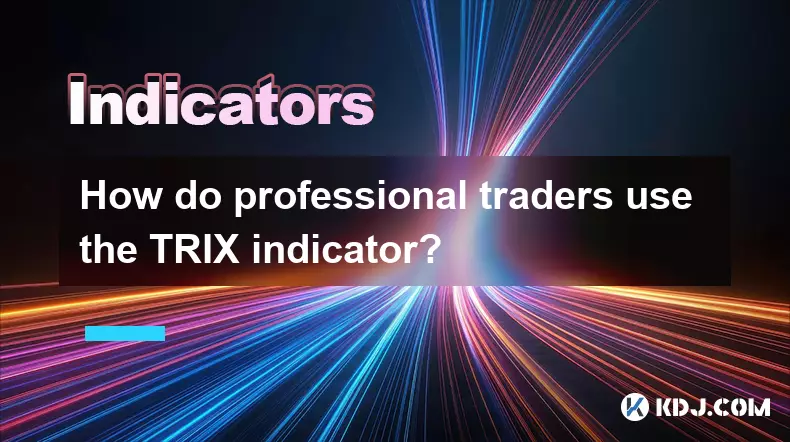
How do professional traders use the TRIX indicator?
Nov 06,2025 at 04:40pm
Understanding the TRIX Indicator in Crypto TradingThe TRIX (Triple Exponential Average) indicator is a momentum oscillator used by professional trader...
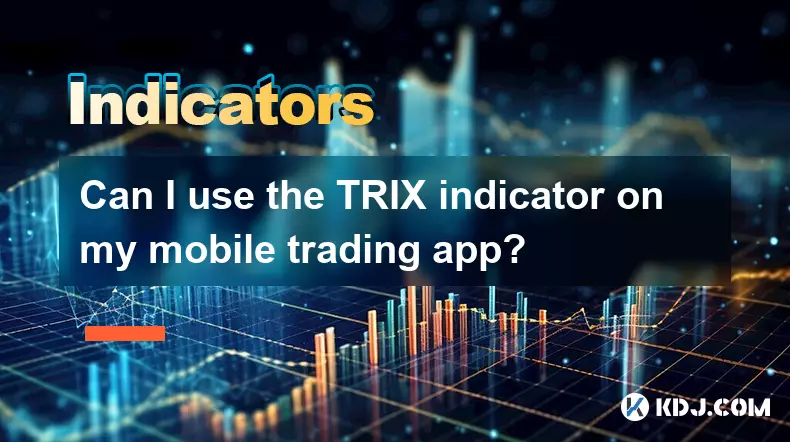
Can I use the TRIX indicator on my mobile trading app?
Nov 07,2025 at 07:40pm
The TRIX indicator, a momentum oscillator designed to filter out short-term fluctuations and highlight long-term trends, has become increasingly popul...
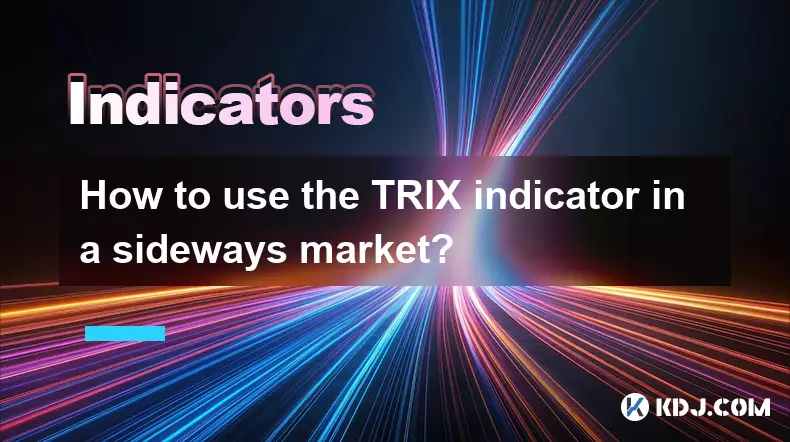
How to use the TRIX indicator in a sideways market?
Nov 10,2025 at 03:00pm
Bitcoin’s Role in Decentralized Finance Evolution1. Bitcoin remains the cornerstone of decentralized finance, serving as both a store of value and a b...
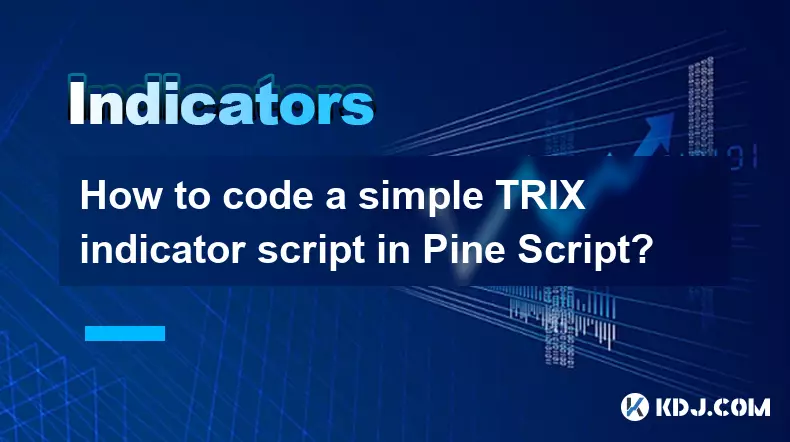
How to code a simple TRIX indicator script in Pine Script?
Nov 07,2025 at 06:20am
How to Code a Simple TRIX Indicator in Pine Script The TRIX (Triple Exponential Moving Average) indicator is widely used in cryptocurrency trading to ...
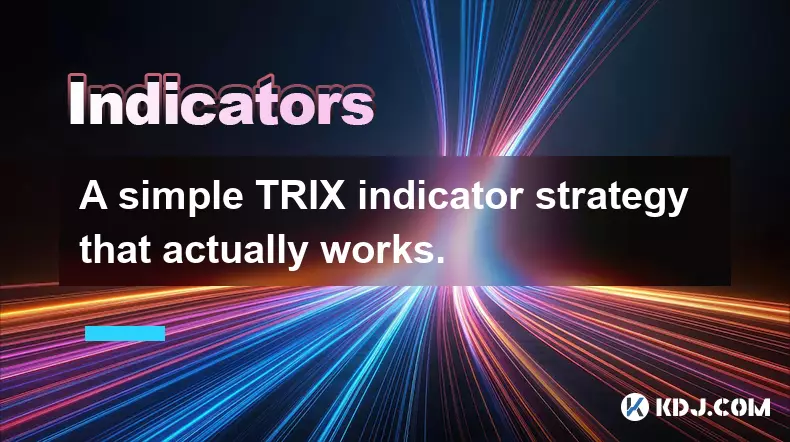
A simple TRIX indicator strategy that actually works.
Nov 08,2025 at 05:39pm
Understanding the TRIX Indicator in Crypto Trading1. The TRIX (Triple Exponential Average) indicator is a momentum oscillator designed to filter out s...

What's the best way to learn the TRIX indicator?
Nov 10,2025 at 12:39pm
Understanding the Basics of the TRIX Indicator1. The TRIX (Triple Exponential Average) indicator is a momentum oscillator designed to filter out short...

How do professional traders use the TRIX indicator?
Nov 06,2025 at 04:40pm
Understanding the TRIX Indicator in Crypto TradingThe TRIX (Triple Exponential Average) indicator is a momentum oscillator used by professional trader...

Can I use the TRIX indicator on my mobile trading app?
Nov 07,2025 at 07:40pm
The TRIX indicator, a momentum oscillator designed to filter out short-term fluctuations and highlight long-term trends, has become increasingly popul...

How to use the TRIX indicator in a sideways market?
Nov 10,2025 at 03:00pm
Bitcoin’s Role in Decentralized Finance Evolution1. Bitcoin remains the cornerstone of decentralized finance, serving as both a store of value and a b...

How to code a simple TRIX indicator script in Pine Script?
Nov 07,2025 at 06:20am
How to Code a Simple TRIX Indicator in Pine Script The TRIX (Triple Exponential Moving Average) indicator is widely used in cryptocurrency trading to ...

A simple TRIX indicator strategy that actually works.
Nov 08,2025 at 05:39pm
Understanding the TRIX Indicator in Crypto Trading1. The TRIX (Triple Exponential Average) indicator is a momentum oscillator designed to filter out s...
See all articles























![🔥 Long awaited! The ancestor of Pi coin is about to take off? PI friends, come in and take a look! [Daily Coin Selection | Bitcoin Trend | Money Making Opportunities] 🔥 Long awaited! The ancestor of Pi coin is about to take off? PI friends, come in and take a look! [Daily Coin Selection | Bitcoin Trend | Money Making Opportunities]](/uploads/2025/11/10/cryptocurrencies-news/videos/6911e42f9bad7_image_500_375.webp)


















































